One of the challenges for any new reader of mainstream superhero comics is finding the right launching point to start one’s fandom. Sure, there are endless Recommend Reading Lists, Looper videos of the greatest storylines in human history, or the occasional in-person guidance from a knowledgeable sage, but there is never a certainty that the first story will provide enough reference to keep one hooked on the material. And because of the expansiveness of stories that have accrued over decades of continuous publication, finding the perfect genesis can be tricky.
Indeed, one of the most challenging comics for newcomers to take stock of is X-Men. With hundreds of characters and many thousands of pages of material, finding the best place to start is a Xavierian task. Luckily for X-Men neophytes, Marvel is preparing to launch one of their most daring experiments to get readers up to speed with the mythos. Beginning on 12/20, Marvel unleashes X-Men: Grand Design, a limited prestige format series that ties together thousands of pages of X-Men comic lore into a compact 240-page narrative.
The singular creative force behind Grand Design is indie cartoonist Ed Piskor, whose Fantagraphics series Hip Hop Family Trees showcases his love of larger than life characters, Bronze Age aesthetics, and carefully crafted art. Grand Design in Piskor’s thesis about the role that the X-Men play in the contemporary imagination. But even more so, Grand Design is one of those dream projects where the idea is so bold and so fresh that it captures a rare feeling of exhilaration. Not too long ago, I had the chance to chat with Ed about where the idea for Grand Design came from, the lingering political and social relevance of X-Men, and what the future of auteur artists working in the realm of mainstream comics looks like.
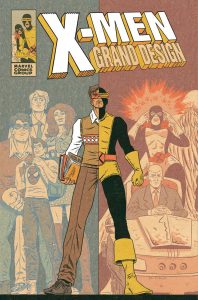
ED PISKOR: The idea was in my head for a while, to be honest, but just in a trivial, nerd way. And as much as I’ve read all the [X-Men] comics, I do not consider them to be infallible. I always had some idea about making them all work together as a unit. I can sell water to a whale, so I make it sound it so cool. A lot of people who know me know that I like X-Men and, very often, a girlfriend will try to relate in some way. When people ask me “What should I read? What comics should I read?”… I frankly can’t point them to any X-Men comics because no matter which one you give somebody, there’s so much baggage that comes along with it that can leave a casual reader in the dust. It occurred to me that there should be an X-Men comic that one can point to highlight all the cool stuff that the series has to offer.
Like you said, I did just randomly put a tweet out one day. It was probably at a moment [mid- to late 2015] where I was really full of myself because—if I think about it correctly—I just got the Eisner for volume II of Hip Hop Family Tree and was in the works of selling Hip Hop Family Tree as a TV series (like a development deal). All this good stuff was lining up. And I just put that tweet out there, ya know? Like ‘Marvel should let me make whatever X-Men comic I want to make.’ I did a hip-hop variant cover for an X-Men comic for Marvel and that was the first thing I did for them. The characters they had me draw… I just had no connection to them. I had no idea there was a girl Wolverine. Angel had these weird fire-y/metallic wings. There was a black girl with an afro who I’ve never seen before ever. I was telling my friends: ‘It’s like I’m drawing the Legion of Super-Heroes or something.’ Just all these characters that I don’t give a crap about.
That kind of went along with the tweet. It wasn’t enough for me to say that Marvel should hire me to draw X-Men because I don’t want to draw any of that stuff now. Ultimately, when I put the tweet out there, there was some artwork to go along with it and it went viral. Axel hit me up pretty rapidly and told me to pitch something. This thing that had been swirling inside my head for a long time was the ideal subject because if this is the only Marvel thing that I draw, then I get to draw all of the X-Men…. All the stuff that I love.
I got the contracts in early 2016 and put pencil to paper in February 2016. And here we are.
FROST: Oh, so you’ve been working on this since early last year, even though it was announced this year?
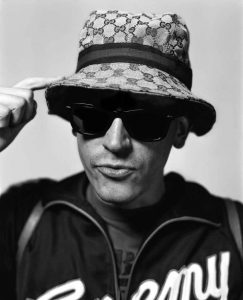
PISKOR: Oh yeah.
FROST: You had to keep it under wraps, though. I bet that was tough.
PISKOR: It was a very vague under wraps. If you go through my Twitter feed, I’m just posting all this X-Men ephemera. And if you look at the comments, you see a lot of people asking ‘Ed, are you doing the X-Men comic? What’s the deal here, man?’ And I would just say nothing. With Hip Hop Family Tree and a comic I did before that called Wizzywig, I was five-six years of finishing a page and posting it online immediately for the world to see. So, it was tough to keep it completely quiet. But I needed this extra year to work in silence because I am the only guy making this thing and it takes a long time. Hip Hop Family Tree has put me in a position where I don’t have to rush. I’m not going to have the most gigantic body of work by the time I die, but you can rest assured that’s it’s gonna be the best I can possibly do.
FROST: When I was doing research for this interview, I went back to a Reddit AMA you did about three years ago. Somebody asked if you would ever do a book for Marvel. You responded: “I would love to, but I’ve been so spoiled the last five years by being able to do whatever I want. I would need them to make a lot of concessions creatively.” Were you surprised that, in the end, Marvel in fact did make so many concessions in support of the vision for Grand Design? Why do you think they allowed you to do that?
PISKOR: I am surprised. The bad reputation amongst creators that the Big 2 has is that they are these protectors of multi-billion dollar properties, so they have a proprietary need to keep it corporate; no fuss, no muss. You can’t upset the people in Kansas with what you do. And, frankly, looking at the books, I can see evidence of that. There is nothing from the Big 2 that has really inspired me to even give them a shot for the last twenty to twenty-five years. I’ve been interested for, basically my whole life, in seeing what an auteur DC or Marvel comic would look like. We’ve gotten pretty close with some comics out there, but they all, at the very least, have two people working on them. I want to read comics made through the vision of just a single person. That’s what I like about comics.
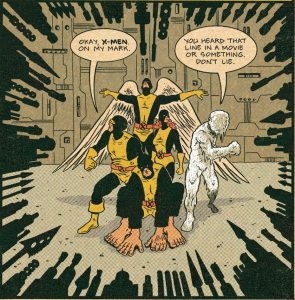
[For Grand Design], there’s been no schedule, really. They understand the amount of work it takes one person to do everything; everything about it is pretty much my construct. And the fact that it’s coming out in a series of these two-issue bursts was an idea I had. I told them, ‘Guys, there’s at least 75 more weeks worth of work here. We’re halfway done. What if we break it up and put it out into these two-issue installments. I kind of proved it successful to put out one trade paperback a year with Hip Hop Family Tree. By the time the second one comes out, the first volume sells the same amount as the second and you move on from there.
FROST: So the plan is to do two individual issues published as a trade for each of the six issues?
PISKOR: Two issues per trade and then I am re-coloring a classic X-Men comic for the trades. Each trade will be about 120 pages and the format of the books is comparable to Hip Hop Family Tree in terms of scale and dimension. I’ve never been a fan of how the Big 2 handle their reprinted material in terms of the color and the paper stock. Marvel sent me the files to classic comics so I’m going back on the weekends and any free time I have available. I’ve recolored X-Men #1 by Stan Lee & Jack Kirby and, for my money, it’s the best Kirby color reprint in existence, to be honest. I will die on that hill defending that statement because I feel that….
FROST: What are you thinking?
PISKOR: Well, I’m just not a fan of these color reprints. The effort that is put into presenting the material isn’t what I would do. So you’re going to get see what I would do and I think people are going to respond amazingly to it.
FROST: Is there a plan to do an omnibus edition once all the issues are released?
PISKOR: You know, that’s years in the future; it’ll take awhile to put these all out. It’s not in my mind. But this is Disney we’re talking about though and they’ll get every dollar out it they can, I’m sure. The way I work as a creator… I think of all audiences involved here. Each issue stands alone as a unit. Certainly, the first trade is going to be a full meal, but obviously, if you read them all together it all works too. There are different audiences for it all. In fact, if you take a look at the cover for the comic book issues, that is an aesthetic that is built for the Wednesday crowd—the people who would go to the comic shop (interested in their favorite characters’ costumes, yadda yadda). I’m very vocal at every level; I’m sure I’m annoying to all various departments within Marvel. I was in touch with the collections people and I bugged them vigorously to allow me to draw a fresh cover for the trade because this thing is going to be in Barnes & Noble. My mom goes to Barnes & Noble so I needed that cover to communicate the idea of what the X-Men is at a rapid clip. That cover caters to a more literary crowd.
I just think of it in all those stages because there are various audiences; it’s not homogenous. It’s all over the place.
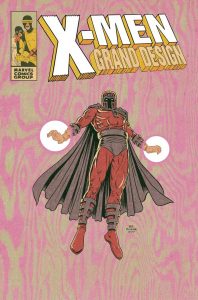
FROST: Let’s take a broader view for a moment. I’m not even sure if the movies have been addressing this, or even the recent comics so much (that’s more about me not reading current X-Men because I have no idea where to start usually)…
PISKOR: Sure…
FROST: But do you think there’s still a political and social importance to X-Men. Is there any anymore? And if so, where do you see it?
PISKOR: [Laughs] Yeah, sure. At its root, X-Men comics are about people who are different from you and who potentially pose some kind of threat. Sure there are political/social implications that will probably be there forever until we are one mixed race sometime in the future. I don’t lean on that for any particular reason other than with sticking with the material; I’m just trying to make a cool X-Men comic. Obviously, the X-Men are normal people with special powers and people who don’t have those powers are freaked out by it. There’s going to be prejudices involved.
It’s really funny that when Marvel made the announcement and there were people who were excited about me doing this or not… I’ve just been in the indie comix space for so long that I wasn’t prepared for this kind of crowd that exists online. You know, where there is a faction of people who look for every slight and are vocal about it. And then there is this other crowd that is impotent rage, fucking white dudes. They’re all knuckleheads of a stripe. The pissed-off white guys are like: ‘We gotta be careful about this one man because this could go social justice warrior right away.” And then the social justice warrior people are like: ‘Here we go! We have another white guy making comics about discrimination!’ So, it’s really can’t win at all with any of them.
FROST: Taking a look the entire project, what was the most challenging part of condensing, as you say, 8,000 pages of X-Men history into 240 pages? In other words, what was the challenge, but also, what was the most exciting aspect of being able to look back at all the work that had come before and create a singular story?
PISKOR: You pose this question in a past-tense manner, but I’m really only a little more than halfway finished. There is still a lot of opportunities for me to pull what’s left of my hair out of my head. Basically, every single night I earn the opportunity to get in bed and pass out because it is an exhausting—exhaustive—project. I bought the biggest bulletin/cork board that money can buy (which is the size of an elementary school chalkboard) and it is full of post-it notes, push-pins, and string tying one pin to another. It looks like insanity. But that’s kind of my default setting. If I do anything, I’m going to give it my all. It’s going to be at the front of my thoughts until it’s over. The entire thing is challenging. I’m learning a lot as a student of comics. I’m learning a lot about the value of one panel and what you can accomplish in one panel (or with one panel). It’s a pretty intense boot camp.
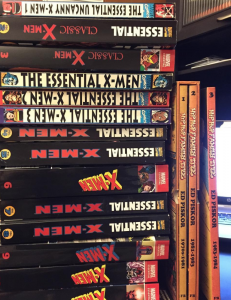
Comics at its best, for me, is a complex logic puzzle that you have to unravel to get to work. Every day is a pleasure on this thing because it is so complex. It’s taken over my thoughts. I dream about it. It’s not an undertaking of the weak, ya know? This is not an undertaking for a guy who is of the mentality of ‘Punch the clock, sit down for eight hours, and then clock out.’ Your rank-and-file cartoonist is not going to be able to do this.
FROST: Up to this point, how has Hip Hop Family Tree prepared you for creating a broad, linear story? But going back further to your work with Harvey Pekar… did his sense of storytelling ever slip its way into your work?
PISKOR: Absolutely. He and I worked on two bigger projects, one called Macedonia and another called The Beats about the Beat Generation. In the latter book, when it goes from panel to panel, there might be months or years of time that transpire between them, so you have to choose the right moment and talk about it in a concise way. That’s what I picked up from Harvey and what I brought to Hip Hop Family Tree. This X-Men comic brings things full circle. When I was doing Hip Hop Family Tree, I knew I had an ensemble cast with hundreds of characters and I wanted to look at some reference for comics that were able to handle that volume of characters. I came up with two things: Chris Claremont’s X-Men and Larry Hama’s G.I. Joe. So I re-read and absorbed all the X-Men comics again around that time [working on Hip Hop Family Tree] because I had to give all these characters a fair shake; Claremont was pretty good at doing that. So now with Hip Hop Family Tree, I have my ten thousand hours of practice of just playing around with hundreds of characters. Now I can bring what I’ve learned through that process to my X-Men project and that’s what I mean about it being full circle. The storytelling style is not that different. And, in fact, when I do my next project, I’m going to do what I can to do a comic book about one character who is the main protagonist rather than two hundred and fifty.
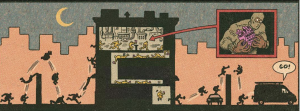
FROST: So we touched a little bit about the notion of auteur cartoonists. Do you think, following your model with Grand Design, that the Big 2 publishers will pursue this avenue more often? Or do you think was more of an exception to the rule?
PISKOR: Money talks. These are corporations. And if my comic is a hit, they’ll want to replicate that. So it’s possible there will be opportunities. I’ve handed this comic with that thought in mind, with a responsibility of giving the Big 2 incentive to do more of this kind of thing. I took it very seriously. DC did Bizzaro Comics years and years ago. Marvel did Strange Tales just a couple years ago. And these were anthologies that got independent comics people to do eight-page stories. They’re novelty projects; they’re jerk off projects. Nobody took them seriously, from the creators all the way up. I didn’t read any of those comics and feel like I saw anybody try to do the greatest Spider-Man comic in existence.
The thing about being one person making the comic is that I have my whole creative team with me wherever I go. There are lots of cartoonists who do work for the Big 2, but they just write—maybe they write a lot—but something tells me that their energy is split up pretty deeply amongst many things. I would bet they would save all their best ideas for themselves on projects that they own. I am actively not doing a project that I own, in which I get 100 percent of the money, in order to put all energy this thing. I just don’t know if any other cartoonists are in that position to be able to do that. It would have to be Dan Clowes or Chris Ware. Something tells me that they’re not going to be doing the next issue of Squirrel Girl.
FROST: Dan Clowes doing a Squirrel Girl comic would be interesting though…
PISKOR: Listen man, he understands pathos. He would do a good job.
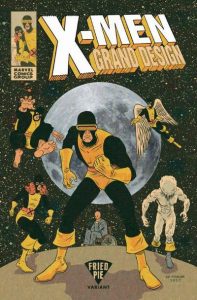
FROST: Last question for ya. If someone was to come into Grand Design fresh, with no experience with the X-Men except for maybe watching a movie or two (or hundred…), what is the one thing that you would hope they would get out of reading your book?
PISKOR: Honestly, I don’t come at the work in those terms. I like to think of myself just as an artist, even though I’m dabbling in a commercial enterprise here. It’s up to the viewers to interpret the materials as they will. What I will say, though, is that I’ve built my career on bringing new readers into the game. I did a comic called Wizzywig which was about computers and high tech; I did Hip Hop Family Tree and that absolutely brought new readers into comics (or, at least, people who haven’t messed around with comics in a really long time). With Grand Design, I hope to introduce people to the X-Men and hopefully, they dig the property as much as I do. That’s pretty much all I can say.
The first issue of X-Men: Grand Design drops on December 20. Please visit your local comic book shop and pick it up!


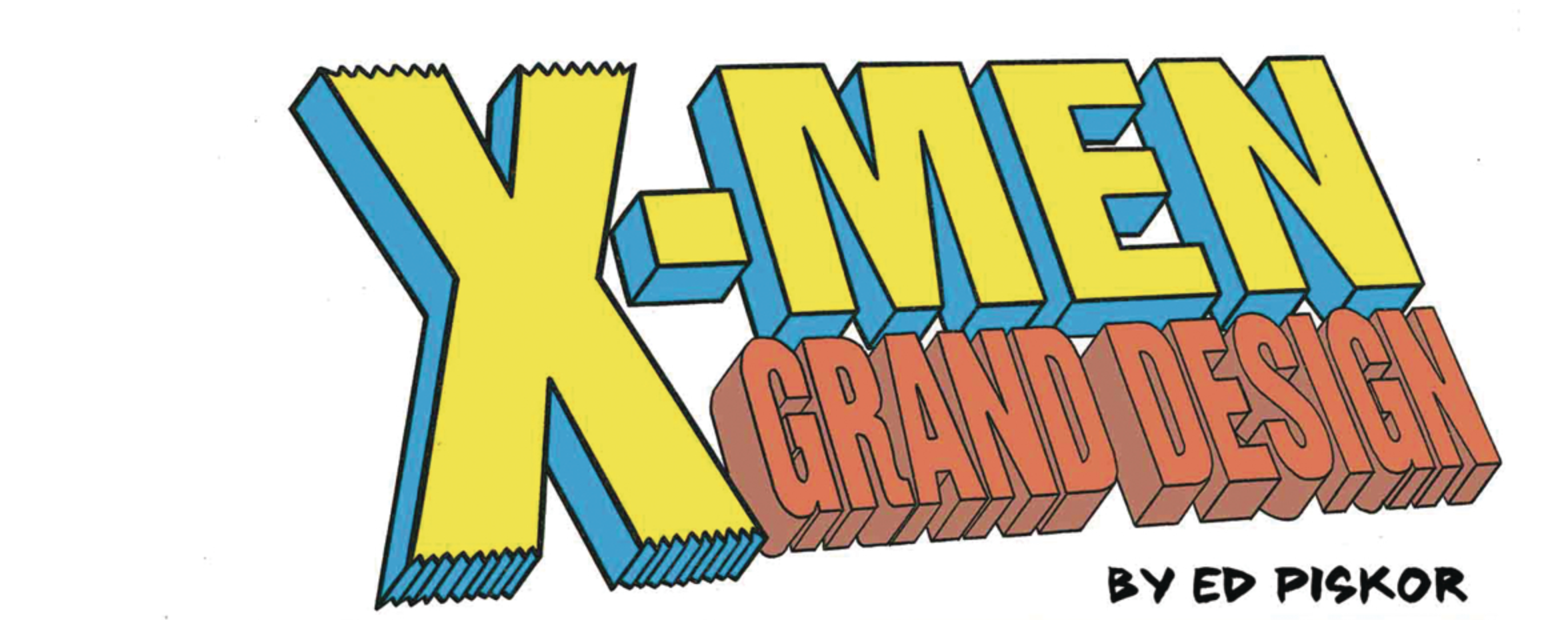

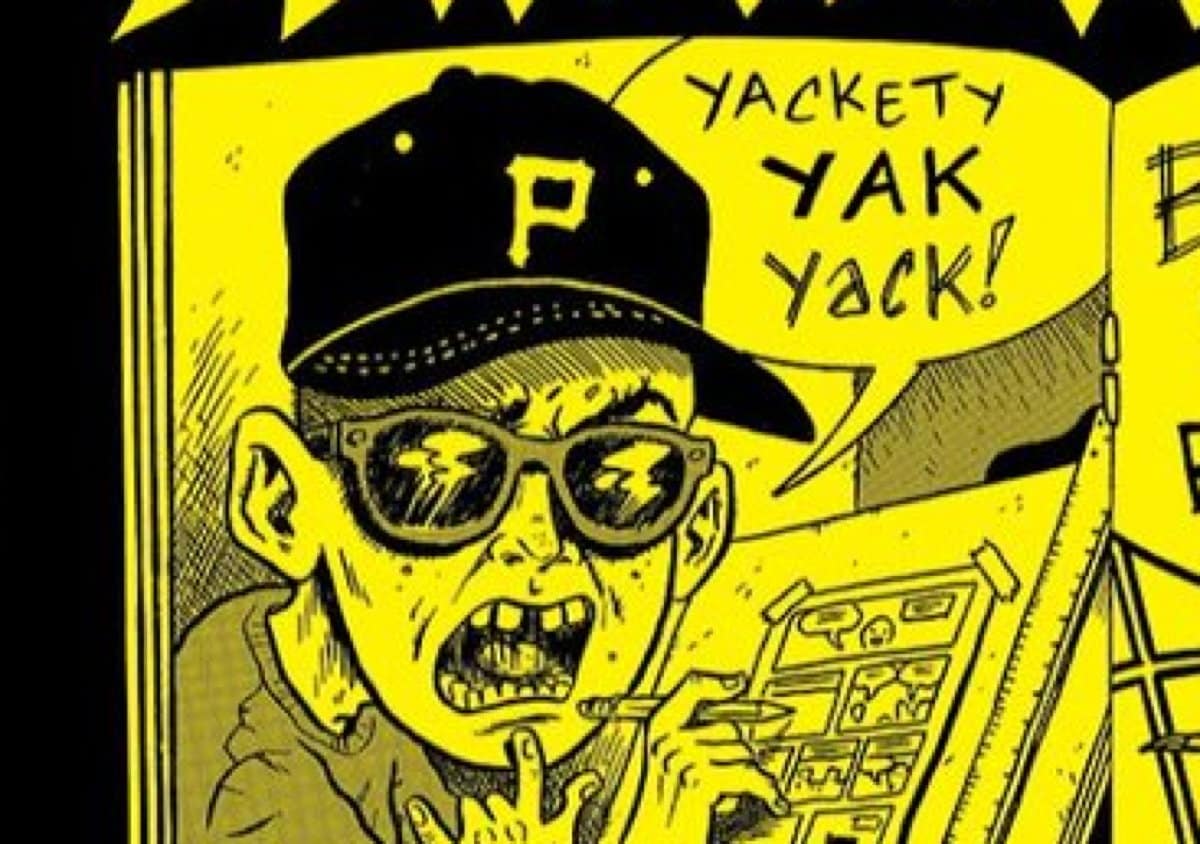
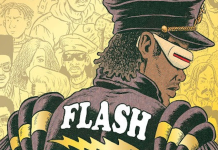



Sounds awesome!
awesome post i like your post and also share in my fb.
Comments are closed.